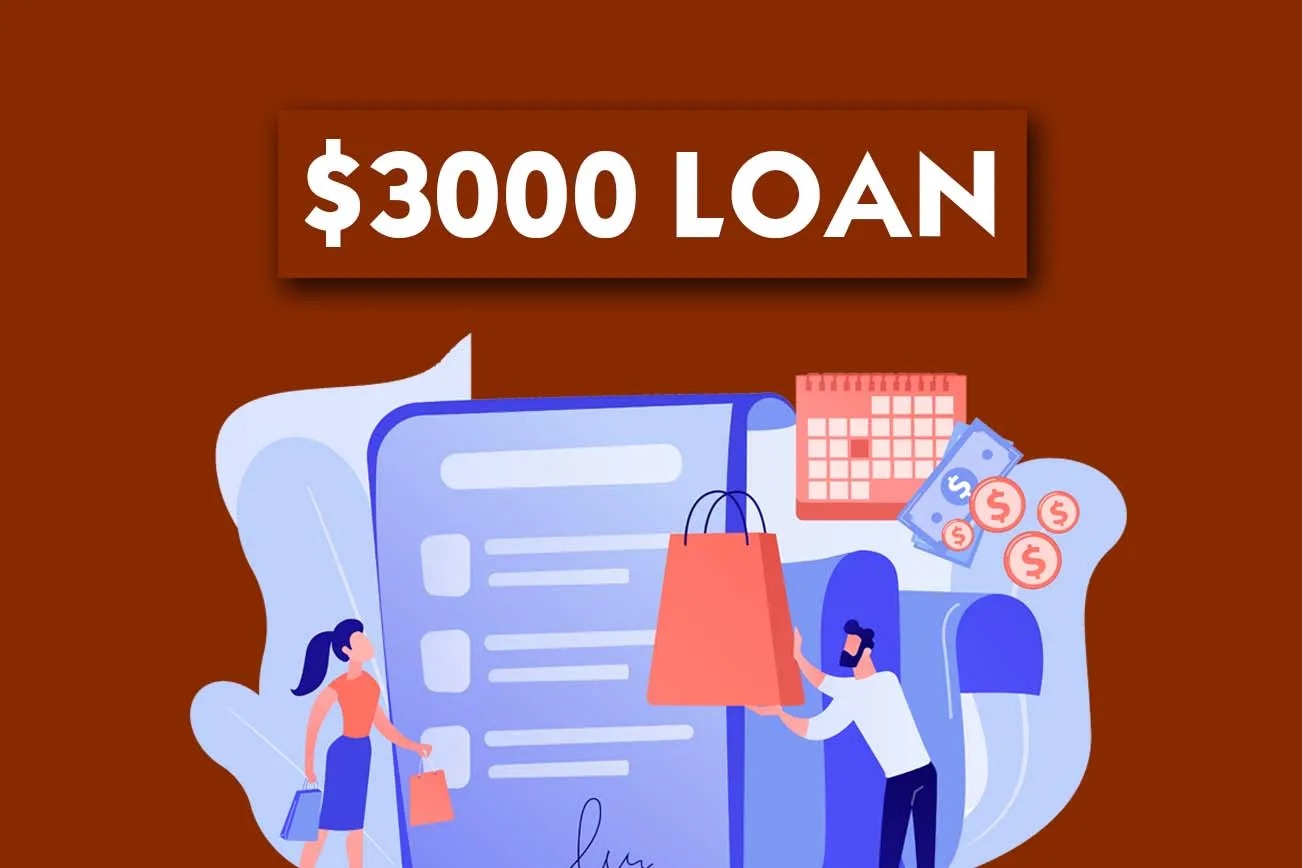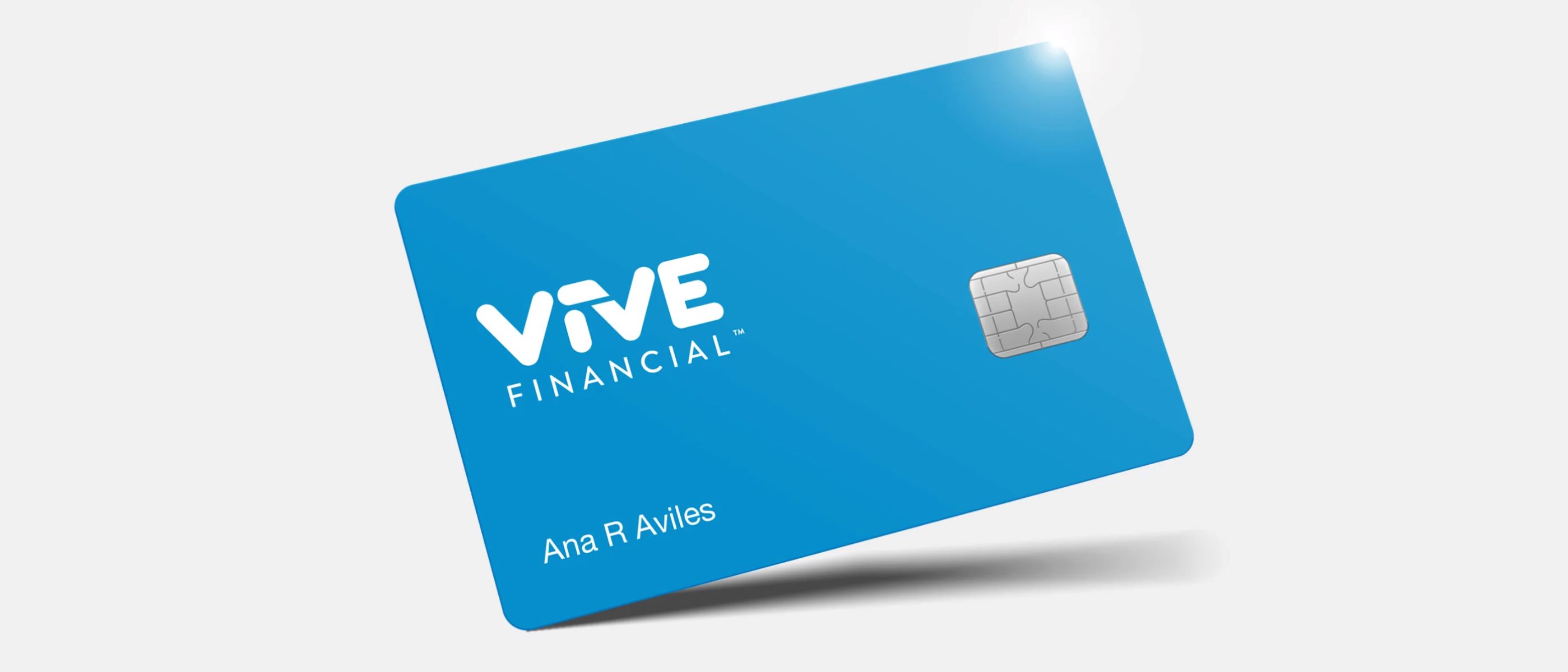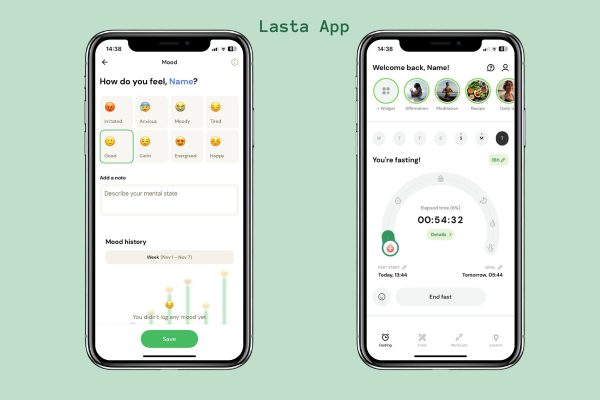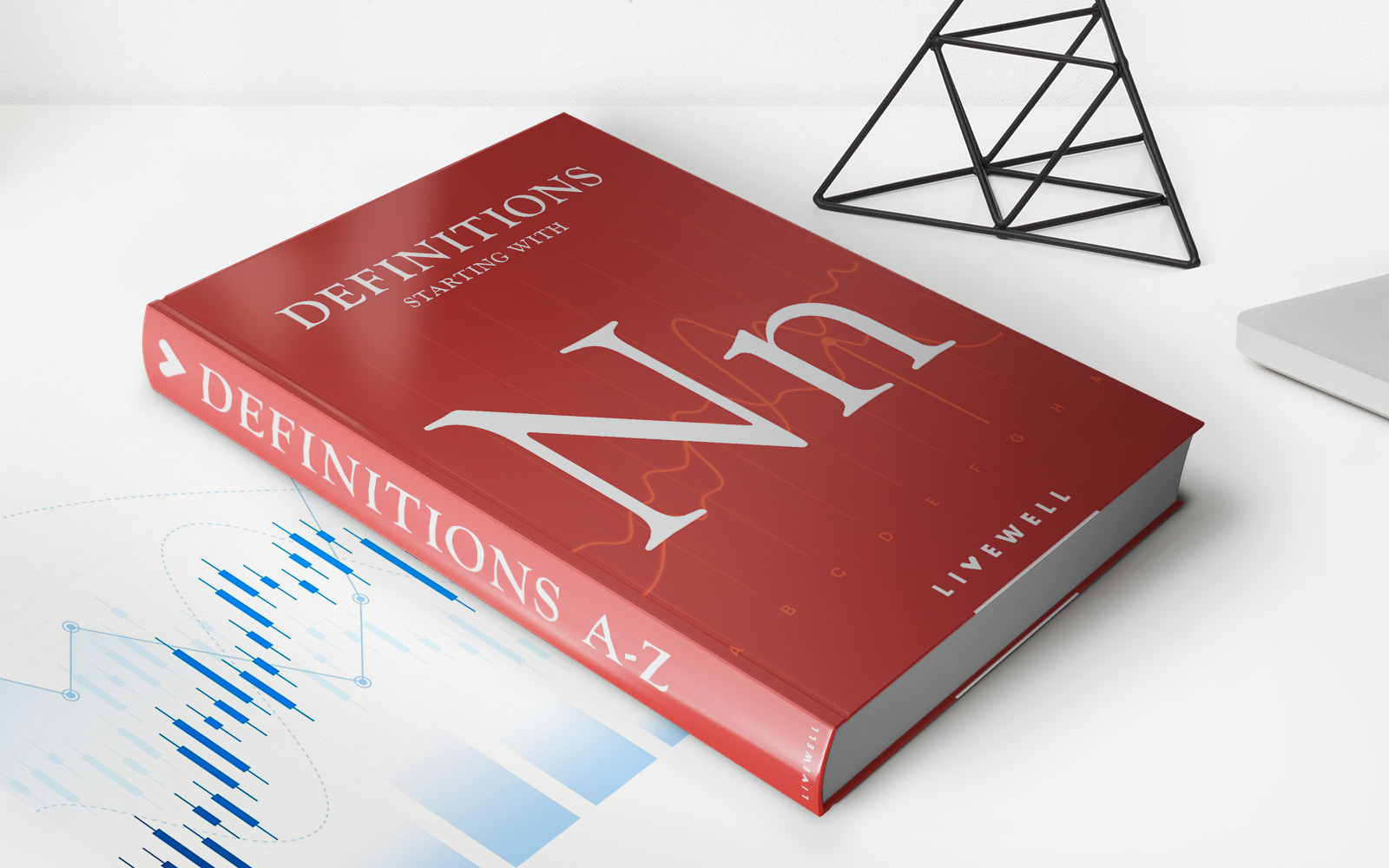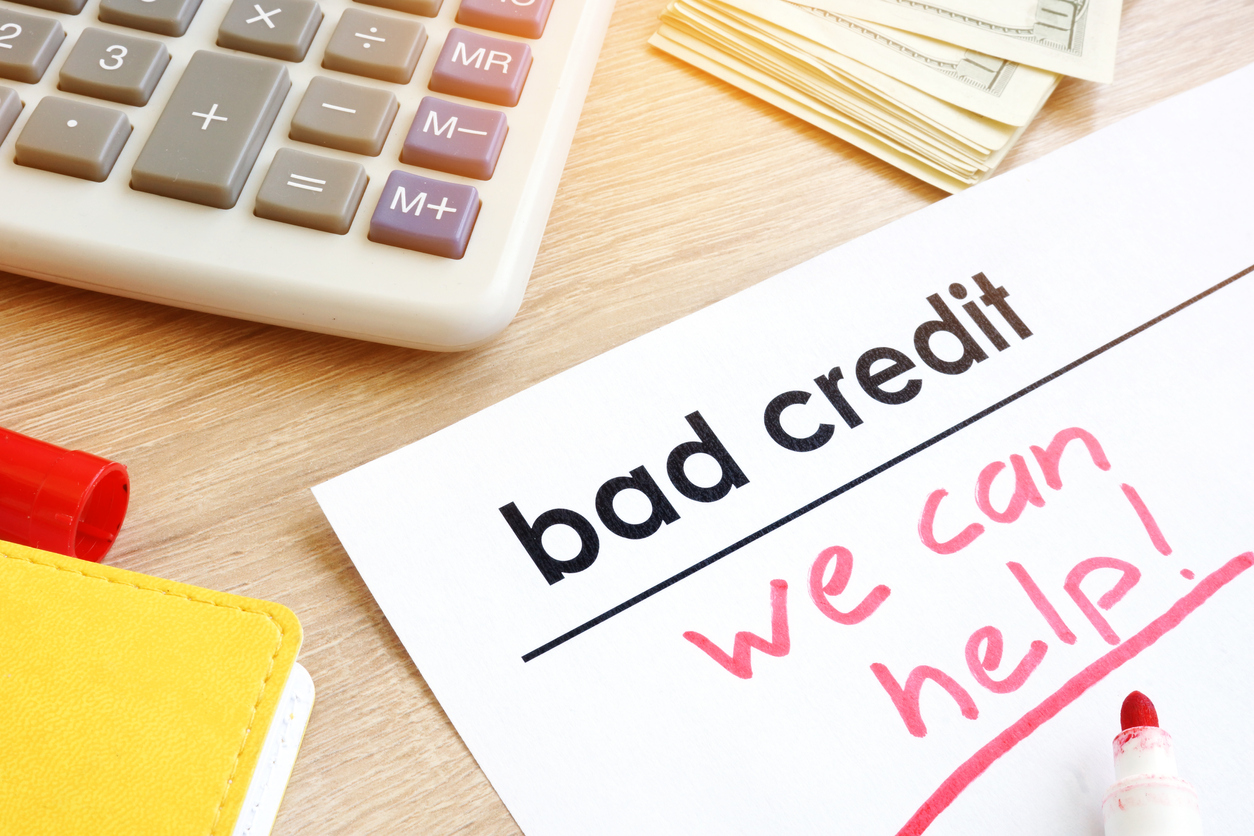

Finance
Where Can I Borrow $1000 With Bad Credit
Published: January 10, 2024
Find out where you can borrow $1000 with bad credit. Explore finance options tailored to your needs and get the cash you need today.
(Many of the links in this article redirect to a specific reviewed product. Your purchase of these products through affiliate links helps to generate commission for LiveWell, at no extra cost. Learn more)
Table of Contents
- Introduction
- Understanding Bad Credit
- Options to Borrow $1000 With Bad Credit
- Payday Loans
- Installment Loans
- Personal Loans from Family or Friends
- Secured Loans
- Peer-to-Peer Lending
- Credit Union Loans
- Online Lenders
- Credit Card Cash Advances
- Borrowing from Retirement Accounts
- Government Assistance Programs
- Conclusion
Introduction
Life is full of unexpected expenses that can put a strain on your finances. Whether it’s a sudden medical bill, car repair, or any other emergency, finding yourself in need of $1000 with bad credit can be a daunting task. Traditional lenders often have strict credit requirements, making it challenging for individuals with a less-than-desirable credit score to secure a loan.
Having bad credit can significantly impact your ability to borrow money. Lenders view bad credit as a risk factor, leading them to deny loan applications or offer higher interest rates. However, there are still options available to those in need of $1000 with bad credit.
In this article, we will explore various options for borrowing $1000 with bad credit. While some options may have higher interest rates or stricter terms, they can provide a lifeline during a financial crisis. It’s important to carefully consider each option, ensuring that you can comfortably repay the borrowed amount to avoid further financial complications.
Remember, bad credit should not define your ability to access financial assistance. By understanding these options, you can make an informed decision and find the best solution for your specific needs while working towards improving your creditworthiness.
Understanding Bad Credit
Before delving into the options for borrowing $1000 with bad credit, it’s crucial to understand what bad credit entails. Your credit score is a numerical representation of your creditworthiness, calculated based on your credit history. It ranges from 300 to 850, with a higher score indicating better creditworthiness.
Bad credit typically refers to a credit score below 600, resulting from factors such as late payments, high credit utilization, debt collections, or bankruptcy. Lenders view individuals with bad credit as high-risk borrowers, making it challenging to secure traditional loans with favorable terms.
Having a bad credit score doesn’t mean you’re financially irresponsible. Various circumstances can lead to a negative credit history, including job loss, medical emergencies, or other unexpected expenses. However, it’s important to acknowledge that bad credit may limit your borrowing options and may come with increased interest rates.
It’s crucial to regularly review your credit report for accuracy and take steps to improve your credit score over time. Paying bills on time, reducing debt, and maintaining a low credit utilization ratio can positively impact your creditworthiness and open up more borrowing opportunities.
Now that we have a better understanding of bad credit, let’s explore the options available for borrowing $1000, even with a less-than-perfect credit score.
Options to Borrow $1000 With Bad Credit
While traditional lenders may be hesitant to lend to individuals with bad credit, there are alternative options that can help you secure a $1000 loan. Here are several options to consider:
- Payday Loans: Payday loans are short-term loans that are typically due on your next payday. These loans are available to individuals with bad credit, but they often come with high interest rates and fees. It’s important to carefully consider the terms and ensure that you can repay the loan on time to avoid further financial strain.
- Installment Loans: Installment loans allow you to borrow a fixed amount of money and repay it in regular monthly installments over a specified period. While interest rates may be higher for individuals with bad credit, these loans provide an opportunity to build credit history by making timely payments.
- Personal Loans from Family or Friends: Consider reaching out to friends or family members who may be willing to lend you the desired amount. It’s important to approach this option with transparency and accountability, setting clear repayment terms to avoid straining personal relationships.
- Secured Loans: With a secured loan, you offer collateral such as your car or home to secure the loan. This reduces the risk for lenders and may make it easier for individuals with bad credit to qualify. However, it’s essential to tread carefully, as defaulting on the loan could result in the loss of your assets.
- Peer-to-Peer Lending: Peer-to-peer lending platforms connect borrowers with individual lenders. These platforms often have more flexible lending criteria and may consider factors beyond just your credit score. However, interest rates and fees can still be higher than those offered by traditional lenders.
- Credit Union Loans: Credit unions are member-owned financial institutions that may be more willing to work with individuals with bad credit. They offer various loan options, including personal loans, and often have lower interest rates and fees compared to traditional banks.
- Online Lenders: Online lenders specialize in providing loans to individuals with bad credit. They often have a streamlined application process and may offer competitive loan terms. As with any loan, it’s essential to carefully review the terms and ensure that the lender is reputable.
- Credit Card Cash Advances: If you have a credit card, you may be able to obtain a cash advance up to your credit limit. Keep in mind that cash advances usually come with high fees and interest rates, so it’s crucial to weigh the costs before proceeding.
- Borrowing from Retirement Accounts: If you have a retirement account, such as a 401(k), you may be able to borrow from it. This option should be approached with caution, as it could impact your long-term retirement savings. It’s advisable to consult a financial advisor to understand the potential consequences before proceeding.
- Government Assistance Programs: Depending on your situation, you may be eligible for government assistance programs that provide financial aid. These programs can help cover expenses during emergencies or specific circumstances.
When considering these options, it’s important to compare terms, interest rates, and repayment schedules. Always borrow responsibly and ensure that you can comfortably repay the loan to avoid further financial difficulties.
Payday Loans
Payday loans are a common option for individuals with bad credit who need to borrow $1000 quickly. These short-term loans are typically due on your next payday, usually within two to four weeks. They are easily accessible and require minimal documentation, making them attractive to those in need of immediate funds.
However, payday loans come with high interest rates and fees, making them an expensive borrowing option. The annual percentage rates (APRs) on payday loans can exceed 400%, which can quickly become unmanageable if you struggle to repay the loan on time. It’s crucial to carefully review the terms and understand the total cost of the loan before agreeing to it.
To apply for a payday loan, you typically need to provide proof of income, a valid ID, and a checking account. The lender will then assess your eligibility based on these factors, rather than solely relying on your credit score. If approved, you will receive the loan amount in cash, a check, or directly deposited into your bank account.
It’s important to use payday loans responsibly and only when absolutely necessary. Consider the following before taking out a payday loan:
- Assess your financial situation: Determine if you will be able to repay the loan on time. Remember that failing to repay a payday loan can lead to additional fees, collection efforts, and negative impacts on your credit score.
- Shop around for the best terms: Compare different lenders to find the lowest fees and interest rates available.
- Understand the repayment terms: Make sure you fully understand when and how the loan must be repaid. Consider creating a repayment plan to ensure you can meet the obligation.
- Explore alternatives: Before committing to a payday loan, consider other options that may have more favorable terms, such as installment loans or personal loans from credit unions.
While payday loans may provide fast access to cash, they should not be relied upon as a long-term solution. If possible, it’s advisable to work on improving your credit score and exploring more affordable lending options in the future.
Installment Loans
Installment loans are another option for individuals with bad credit who need to borrow $1000. These loans allow you to borrow a fixed amount of money and repay it in regular monthly installments over a specified period, usually ranging from a few months to a few years.
Installment loans often have more flexible eligibility requirements compared to traditional bank loans, making them more accessible to individuals with bad credit. While interest rates for those with bad credit may be higher than for those with good credit, installment loans provide an opportunity to build positive credit history by making timely payments.
When considering an installment loan, it’s crucial to review the terms and conditions carefully. Here are a few factors to keep in mind:
- Interest Rates: Understand the interest rate associated with the loan. While higher interest rates are common for borrowers with bad credit, compare rates from different lenders to find the most favorable option.
- Repayment Period: Evaluate the length of the repayment period and ensure it aligns with your financial capabilities. A longer repayment period may result in lower monthly installment payments but may also mean paying more in interest over time.
- Loan Amount: Confirm that the loan amount meets your financial needs. Borrowing more than necessary can lead to increased interest costs and financial strain.
- Fees: Be aware of any upfront fees or hidden charges associated with the loan. Transparent lenders will disclose all fees upfront.
- Approval Time: Consider the turnaround time for loan approval. If you need funds quickly, opt for lenders with fast approval processes.
- Lender’s Reputation: Research the lender’s reputation and check customer reviews to ensure they have a trustworthy track record.
By making regular payments on your installment loan, you can improve your creditworthiness over time. This can open up access to more favorable borrowing terms and help you achieve financial goals in the future.
Before applying for an installment loan, explore multiple lenders to find the best terms and rates available for your credit score. Remember to only borrow what you need and ensure that the loan payments fit within your monthly budget. Responsible borrowing and timely repayment are essential to maintain a positive financial trajectory.
Personal Loans from Family or Friends
When in need of a $1000 loan with bad credit, turning to family or friends for financial assistance can be a viable option. Personal loans from loved ones can provide a more affordable and comfortable borrowing experience compared to traditional lenders.
When borrowing from family or friends, it’s important to approach the situation with transparency and clear communication. Here are some points to consider:
- Open and Honest Communication: Clearly explain your financial situation, the reason for needing the loan, and discuss repayment terms upfront. Being transparent about your circumstances and intentions will help build trust and avoid misunderstandings.
- Set Clear Terms: Discuss and agree upon important terms such as the loan amount, interest rate (if applicable), repayment schedule, and any consequences for missed payments. Putting these details in writing can provide clarity and prevent future conflicts.
- Treat it as a Formal Loan: Approach the loan as a serious financial transaction, even if it’s with someone close to you. This includes treating it as a binding agreement and honoring the agreed-upon terms.
- Consider the Impact: Evaluate the potential impact on the lender’s finances and relationship before accepting the loan. Make sure you have a plan in place to repay the loan on time to avoid straining your personal relationship.
- Express Gratitude: Show appreciation for the assistance and regularly update the lender on your progress in repaying the loan. Expressing gratitude and keeping them informed ensures a healthy and positive lending experience.
Borrowing from family or friends can provide more flexibility in terms of interest rates, repayment schedules, and eligibility criteria. However, it’s important to remember that money can sometimes strain relationships, so it’s crucial to handle the loan with care and respect.
If you decide to borrow from a loved one, treat the loan as seriously as you would with a traditional lender. Repay the loan on time and in full, and consider offering interest or a small token of appreciation to show your gratitude.
Remember, while personal loans from family or friends may seem like a convenient option, it’s important to consider other alternatives and proceed with caution to protect both your financial interests and your relationships.
Secured Loans
Individuals with bad credit can explore the option of obtaining a secured loan when in need of a $1000 loan. A secured loan requires collateral, such as your car, home, or another valuable asset, to secure the loan. By providing collateral, borrowers can mitigate the risk for lenders, making it easier to qualify for a loan even with bad credit.
Secured loans typically have lower interest rates compared to unsecured loans, as the collateral provides assurance to the lender. However, it’s crucial to carefully consider the risks associated with secured loans:
- Asset Loss: If you default on the loan, the lender can seize the collateral. This means you may lose your car or home if you fail to repay the loan as agreed. Make sure you have a solid repayment plan in place to avoid this situation.
- Impact on Credit: While using collateral can help you secure a loan with bad credit, defaulting on a secured loan can still negatively impact your credit score. It’s essential to make payments on time and as agreed to maintain a positive credit history.
- Valuation of Collateral: Lenders will assess the value of your collateral and may use this evaluation to determine the loan amount. The value of the collateral may restrict the loan amount you can borrow.
- Interest Rates: Even with collateral, lenders may still charge higher interest rates for individuals with bad credit. It’s important to shop around and compare rates from different lenders to find the most affordable option.
Before opting for a secured loan, carefully evaluate your financial situation and the value of the collateral being offered. Ensure that the loan repayment fits within your budget to avoid defaulting and risking the loss of your valuable assets.
It’s advisable to consult with a financial advisor or professional to fully understand the terms and consequences of a secured loan. They can help you weigh the pros and cons and determine if it is the right option for your specific needs.
Remember, secured loans can offer a way to borrow $1000 with bad credit, but they come with significant risks. Make sure to thoroughly assess your financial capability and explore other options before pledging collateral for a loan.
Peer-to-Peer Lending
If you have bad credit and need to borrow $1000, peer-to-peer lending platforms can provide an alternative option. Peer-to-peer lending, also known as P2P lending, connects borrowers directly with individual lenders through online platforms.
Unlike traditional lenders, peer-to-peer lending platforms consider factors beyond just your credit score when assessing loan eligibility. They allow borrowers to create a profile and share their financial information, providing lenders with a more holistic view of their creditworthiness.
Here’s how peer-to-peer lending works:
- Loan Application: As a borrower, you will need to create a profile on the peer-to-peer lending platform and complete a loan application. This includes providing information about your financial situation, employment, and the purpose of the loan.
- Lender Evaluation: Individual lenders on the platform will review loan applications and determine which borrowers they are willing to lend to. Lenders consider various factors, such as the applicant’s credit profile, income, and loan purpose.
- Interest Rates: If approved, the platform will assign an interest rate to your loan based on your creditworthiness. The interest rates for peer-to-peer loans can vary and may be higher for borrowers with bad credit.
- Funding: Once your loan is approved, it will be listed on the platform for individual lenders to fund. Multiple lenders can contribute to funding your loan, spreading the risk among different investors.
- Repayment: Repayment terms and schedules are determined by the platform, and borrowers make regular monthly payments. The platform handles the collection and distribution of payments to lenders.
Peer-to-peer lending can be a more accessible option for individuals with bad credit as it takes a more personalized approach to lending. However, it’s important to carefully review the terms and conditions, including interest rates, fees, and repayment schedules.
Before choosing a peer-to-peer lending platform, consider the following:
- Platform Reputation: Research the platform’s reputation, read reviews, and ensure it is reputable and trustworthy.
- Loan Terms: Compare the interest rates, fees, and repayment options offered on different platforms to find the most favorable terms for your situation.
- Borrower Protections: Look for platforms that have borrower protection measures in place, such as loan default guarantees or dispute resolution processes.
- Lender Diversity: Opt for platforms that have a wide range of lenders. This increases the likelihood of getting your loan funded and provides options for competitive interest rates.
By leveraging the power of technology and connecting borrowers with individual lenders, peer-to-peer lending offers an alternative solution for individuals with bad credit looking to borrow $1000. However, it’s important to do your due diligence and carefully assess the terms and conditions before proceeding with a peer-to-peer loan.
Credit Union Loans
If you have bad credit and need to borrow $1000, credit unions can be an excellent alternative to traditional banks. Credit unions are member-owned financial institutions that cater to the needs of their members, often offering more flexible lending options, including personal loans.
Credit unions focus on providing affordable financial services to their members, which can include individuals with bad credit. They are known for their community-oriented approach and willingness to work with borrowers who may not meet the strict requirements of traditional lenders.
Here are some benefits of obtaining a loan from a credit union:
- Lower Interest Rates: Credit unions typically offer lower interest rates on personal loans compared to traditional banks, even for borrowers with bad credit. This can result in significant savings over the life of the loan.
- Flexible Eligibility: Credit unions often take a more holistic approach to evaluating loan applications, considering factors beyond just the credit score. They may take into account your employment history, income, and other factors that traditional lenders may overlook.
- Personalized Service: Credit unions prioritize their members’ needs and provide a more personalized experience. Their loan officers can work with you to understand your financial situation and tailor a loan that best fits your needs.
- Opportunity to Build Credit: By successfully repaying a loan from a credit union, you can demonstrate responsible financial behavior and improve your creditworthiness over time. This can open up more favorable borrowing options in the future.
- Access to Other Products and Services: Joining a credit union provides access to a wide range of financial products and services beyond just personal loans. This includes savings accounts, checking accounts, credit cards, and even financial education resources.
To obtain a loan from a credit union, you would typically need to become a member by meeting specific eligibility criteria, such as belonging to a certain community, profession, or organization. Once a member, you can apply for a personal loan and work with the credit union’s loan officer to assess your borrowing options.
When considering a credit union loan, be sure to compare interest rates, repayment terms, and any associated fees. Each credit union may have different options and requirements, so it’s important to do some research and find one that best suits your needs.
By exploring credit union loans, individuals with bad credit can find a supportive and affordable option for borrowing $1000 while potentially improving their credit situation. Remember, credit unions prioritize their members’ best interests, making them a valuable resource for those seeking financial assistance.
Online Lenders
When traditional lenders are less accessible due to bad credit, online lenders can provide an alternative solution for individuals in need of a $1000 loan. Online lenders specialize in providing loans to borrowers with varying credit profiles, including those with bad credit.
Here are some key points to consider when exploring online lenders:
- Larger network of lenders: Online lending platforms connect borrowers with a network of lenders, increasing the chances of finding a lender willing to work with individuals with bad credit. This allows for more options and competitive loan terms.
- Ease and convenience: Online lenders offer a simplified application process that can be completed from the comfort of your own home. Many online lenders provide instant pre-approval decisions, making it a convenient option when time is of the essence.
- Accessible for bad credit borrowers: Online lenders tend to be more flexible in their lending criteria, focusing on other factors in addition to credit scores. This gives individuals with bad credit a better chance of qualifying for a loan.
- Wide range of loan options: Online lenders offer various loan types, including payday loans, installment loans, or personal loans. It’s important to choose the loan type that matches your financial needs and repayment capabilities.
- Transparent terms and fees: Reputable online lenders provide transparency regarding loan terms, interest rates, and fees. This allows borrowers to make informed decisions and compare options before committing to a loan.
While online lenders have their advantages, it’s essential to be cautious and do thorough research when selecting a lender. Here are a few tips to keep in mind:
- Check lender credibility: Research the lender’s reputation, read customer reviews, and ensure they are licensed and registered to operate in your state.
- Read and understand the terms: Carefully review the loan terms, including interest rates, fees, and repayment schedules, to ensure they align with your budget and financial goals.
- Protect your personal information: Verify that the lender’s website is secure to protect your personal and financial information during the application process.
- Avoid predatory lenders: Be cautious of lenders with excessively high interest rates, unclear terms, or aggressive debt collection practices.
Prioritize lenders that are transparent, have a positive reputation, and offer reasonable loan terms. Make sure to compare multiple lenders to find the most competitive rates and favorable repayment options.
Online lenders can provide a convenient and accessible option for individuals with bad credit who need to borrow $1000. However, thorough research and due diligence are essential to ensure you are working with a reputable lender who can meet your borrowing needs while protecting your financial interests.
Credit Card Cash Advances
Another option for individuals with bad credit who need to borrow $1000 is to consider a credit card cash advance. If you have a credit card, this can be a convenient way to access the required funds quickly.
A credit card cash advance allows you to withdraw cash from your credit card account at an ATM or through other cash advance options provided by the credit card issuer. Here’s how it works:
- Check your credit card terms: Review your credit card agreement or contact your card issuer to understand the terms and conditions associated with cash advances. This includes the fees, interest rates, and any limits imposed on cash advances.
- Identify the cash advance options: Determine the available methods for obtaining a cash advance. This can include ATM withdrawals, over-the-counter cash advances at banks or credit unions, or online transfers to your bank account.
- Understand the costs: Cash advances typically come with higher interest rates and fees compared to regular credit card purchases. The interest on cash advances often starts accruing immediately without a grace period, meaning you’ll start accruing interest from the moment you withdraw the cash.
- Withdraw the cash: Once you understand the associated costs, use the credit card to withdraw the desired cash amount. Be mindful of any withdrawal limits imposed by the card issuer.
- Repay the cash advance: Make timely payments to repay the cash advance. It’s essential to pay more than the minimum required payment to minimize the impact of high interest charges.
While credit card cash advances can provide quick access to funds, it’s important to carefully consider the associated costs and potential consequences:
- High costs: Cash advances often come with high fees and interest rates, making them an expensive borrowing option. It’s crucial to assess whether the convenience of accessing quick cash outweighs the financial burden of the associated costs.
- Impact on credit utilization: Cash advances can increase your credit utilization ratio, which is the amount of credit you’ve used compared to the total credit available to you. Higher credit utilization can negatively impact your credit score.
- Alternative repayment plan: If you foresee challenges in repaying the cash advance in a timely manner, consider exploring other options to avoid falling into a cycle of debt.
Before resorting to a credit card cash advance, explore other borrowing options and assess their costs and terms. It’s important to consider the impact on your overall financial situation and your ability to repay the cash advance in a timely manner.
Remember, responsible use of credit card cash advances involves understanding the costs, repaying the borrowed amount promptly, and avoiding unnecessary reliance on this borrowing method.
Borrowing from Retirement Accounts
If you have a retirement account, such as a 401(k) or an Individual Retirement Account (IRA), you may have the option to borrow from it when in need of a $1000 loan. However, it’s crucial to carefully consider the potential implications before deciding to borrow from your retirement savings.
Borrowing from a retirement account can be an alternative option, especially for those with bad credit, as it does not involve a credit check or lender approval. Here’s how it typically works:
- Check plan rules: Review the rules and guidelines set by your retirement account provider to determine if borrowing is permitted. Not all retirement plans allow loans, so it’s essential to understand your plan’s specific provisions.
- Loan limits: Take note of the borrowing limits imposed by your retirement plan. Typically, you can only borrow up to a certain percentage of your account balance or a specified dollar amount.
- Loan terms: Understand the terms and conditions of the loan, including the interest rate, repayment schedule, and any fees associated with the borrowing. These terms can vary based on your retirement plan and provider.
- Repayment obligations: Familiarize yourself with the repayment requirements outlined by your retirement plan. Generally, loans must be repaid within a specific period, usually five years, and failure to repay the loan may result in penalties and taxes.
- Impact on retirement savings: Consider the potential impacts of borrowing from your retirement account. By taking a loan, you may miss out on the potential growth of your investments, and it can delay your retirement savings goals.
It’s important to note that if you leave your job or encounter significant financial challenges, the loan from your retirement account may become due immediately. In such cases, failure to repay the loan can result in additional taxes and penalties.
Borrowing from a retirement account should be approached with caution and considered as a last resort. Before deciding to take a loan, explore other borrowing options and assess the long-term consequences on your retirement savings. It’s advisable to consult with a financial advisor or tax professional to fully understand the potential impacts.
While borrowing from a retirement account can be a convenient option for individuals with bad credit, it’s crucial to carefully evaluate the risks and benefits and ensure that repaying the loan is feasible to protect your future financial well-being.
Government Assistance Programs
Individuals with bad credit who need to borrow $1000 can explore various government assistance programs that provide financial aid during times of need. These programs aim to support individuals and families facing challenging circumstances and provide assistance in the form of grants, loans, or other resources.
Here are some common government assistance programs that can help individuals in need:
- Emergency Cash Assistance: Some states offer emergency cash assistance programs that provide financial aid to individuals and families facing unexpected emergencies. These programs typically have specific eligibility criteria, so it’s important to check with your local government or social services department for more information.
- Temporary Assistance for Needy Families (TANF): TANF is a federal assistance program that provides financial support to low-income families. It offers cash assistance, job training, and other supportive services to help families meet their basic needs and become self-sufficient.
- Supplemental Security Income (SSI): SSI provides financial assistance to elderly, blind, or disabled individuals with limited income and resources. Eligible individuals may receive monthly cash benefits to help cover basic living expenses.
- Housing Assistance Programs: The Department of Housing and Urban Development (HUD) offers various programs to assist individuals with housing needs. These programs include rental assistance, public housing, and federal housing vouchers.
- Small Business Administration (SBA) Loans: If you are a small business owner in need of financial assistance, the SBA offers loans and support programs to help businesses recover from disasters or overcome financial challenges. These loans can provide the necessary funds to stabilize and grow your business.
- Student Aid Programs: If you require financial assistance for educational purposes, federal student aid programs, such as grants, scholarships, and low-interest loans, can help cover the costs of tuition, books, and other educational expenses.
To explore government assistance programs, visit the official websites of relevant government agencies, such as the Department of Health and Human Services, the Department of Housing and Urban Development, or the Small Business Administration. These websites provide detailed information on eligibility requirements, how to apply, and the types of assistance available.
When considering government assistance programs, it’s essential to review the specific eligibility requirements, application processes, and any restrictions or limitations associated with the assistance. Additionally, be aware that the application and approval processes may take time, so plan accordingly.
Government assistance programs can provide much-needed financial support for individuals with bad credit who need to borrow $1000. Take advantage of these resources to help bridge the financial gap and work towards improving your overall financial situation.
Conclusion
When in need of a $1000 loan with bad credit, it’s important to explore various options available. While traditional lenders may have stringent credit requirements, there are alternative paths to secure the funds you need.
Payday loans, installment loans, personal loans from family or friends, secured loans, peer-to-peer lending, credit union loans, online lenders, credit card cash advances, borrowing from retirement accounts, and government assistance programs are just a few of the options available.
Each option has its own advantages and considerations, and it’s crucial to evaluate them based on your unique financial situation. Consider factors such as interest rates, repayment terms, eligibility criteria, and potential consequences of defaulting on the loan.
Additionally, aim to borrow responsibly by only taking what you need and ensuring that you can repay the loan in a timely manner. Building good credit habits and working towards improving your credit score will provide better access to borrowing opportunities and more favorable terms in the future.
Lastly, seek guidance from financial advisors or professionals who can provide valuable insights tailored to your specific circumstances.
Remember, having bad credit should not discourage you from seeking financial assistance. By exploring these options and making informed decisions, you can find the best solution to meet your immediate needs while working towards a more stable financial future.
Ultimately, responsible borrowing, thorough research, and careful consideration of all options will help you navigate the lending landscape and find the best path to borrow $1000 with bad credit.


